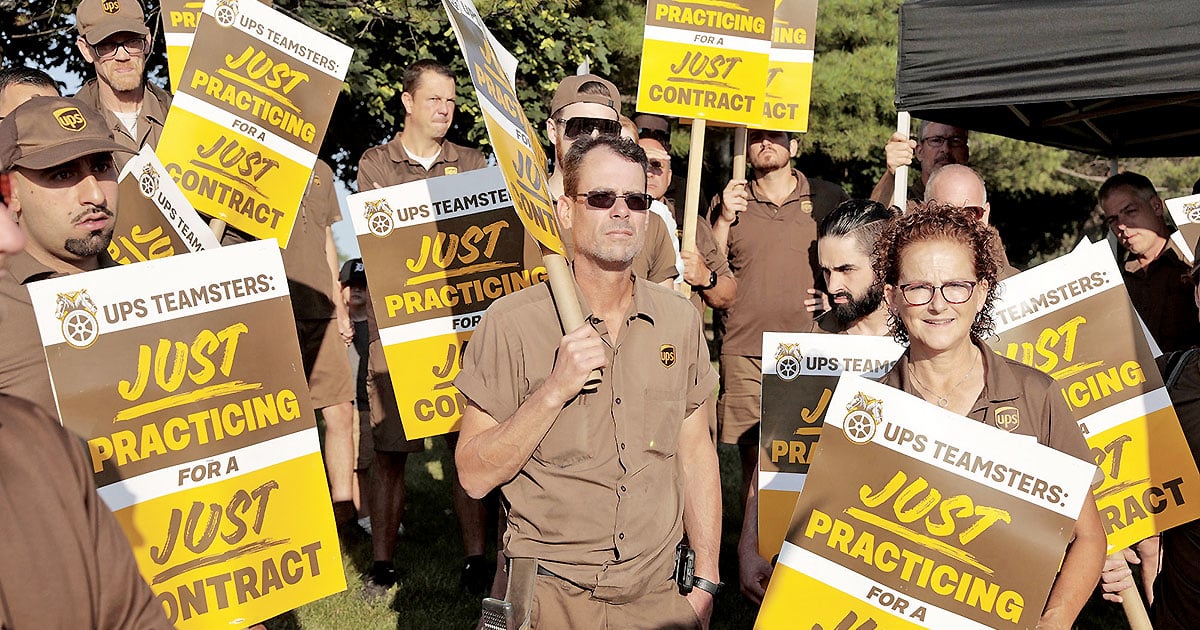
If the Detroit 3 want a glimpse of how contract negotiations with the UAW may play out in the coming weeks, they can look to a handful of deals struck recently by that union and others.
In the last two years, the UAW has negotiated new contracts with John Deere, Caterpillar and Case New Holland that achieved much of what it seeks from the Detroit 3: double-digit wage gains, elimination of multiple wage tiers, addition of pensions and restoration of cost-of-living adjustments.
Chuck Browning, vice president of the UAW’s Ford department, led negotiations for those contracts, and in two of the three cases won additional benefits after workers voted down initial tentative deals and went on strike. The bargaining strategies used by the union — and by the Teamsters to reach a financially beneficial tentative agreement for UPS workers last month — likely will be a template for negotiations with Ford Motor Co., General Motors and Stellantis.
“We now have a window of great opportunity to do great things over the next several years in our collective bargaining agreements,” Browning told members at the UAW’s March convention. “Just see what [John Deere, Caterpillar and Case New Holland] negotiating committees were able to achieve. It is a good time to bargain. Strikes are effective right now.”
Even in the case of Caterpillar and UPS, which didn’t strike, the unions used the threat of a walkout as leverage.
Marick Masters, a labor expert at Wayne State University, said Detroit 3 workers will have recent deals on their minds when it comes time to decide whether to ratify a proposed contract.
“The membership is aware of all these things,” he said. “It will definitely have an impact on their thinking. They’ll cite them chapter and verse to push their demands.”
More than 10,000 John Deere workers began striking in October 2021 after failing to reach an agreement. Like with the Detroit 3, the workers were seeking to restore lost benefits made in past deals.
“That group of workers got together and said, ‘We’re going to fight for everything we can get and we’re not settling for anything less,’ ” Browning said in March. “That was a lathered-up, fighting membership.”
The workers walked on picket lines for a month while turning down two proposed contracts. The six-year pact they ultimately ratified provided 20 percent wage increases, including 10 percent up front; COLA; pensions; and increased personal time, among other gains. The raises essentially doubled what the company offered in its first proposal.
“They don’t realize the impact they made on the rest of the UAW,” Browning said of the John Deere team.
Case New Holland has a much smaller footprint — two U.S. plants and roughly 1,000 workers who build farm equipment — but its demands were similar. UAW members there struck for nine months.
“If Deere showed that having great density and a membership willing to fight can get you a lot of gains in pretty quick order, [Case New Holland] showed the entire UAW — and the world — that we can sustain a strike,” Browning said.
They won wage gains of as much as 28 percent, caps on health care premiums and a plant-closing moratorium.
The Teamsters came to a tentative agreement with UPS last month on a five-year contract that raises pay by up to $7.50 an hour, eliminates a lower classification of drivers, increases holiday time off and makes safety improvements such as mandating air conditioning in vehicles.
The ratification vote is ongoing.
The union reached the deal following a public pressure campaign against UPS that involved a serious strike threat.
During negotiations, Teamsters President Sean O’Brien blasted the company’s proposals. The union also had workers gather to practice picketing. UAW President Shawn Fain has mirrored many of those tactics, from literally trashing a proposal from Stellantis to hosting strike prep meetings at union locals across the country.
In an interview, he praised what the Teamsters achieved and said there were some commonalities between those talks and the UAW’s negotiations with the Detroit 3, although he said getting new contracts with the automakers will present unique challenges.
“Every round of bargaining is different, every situation’s different,” Fain told Automotive News. “There are similarities, but there’s always nuances to every company and what we’re looking to pursue here.”